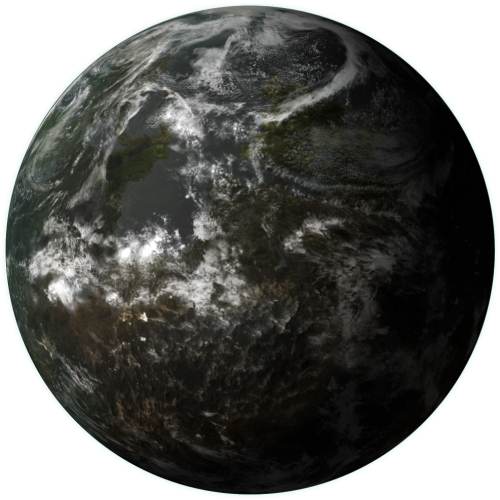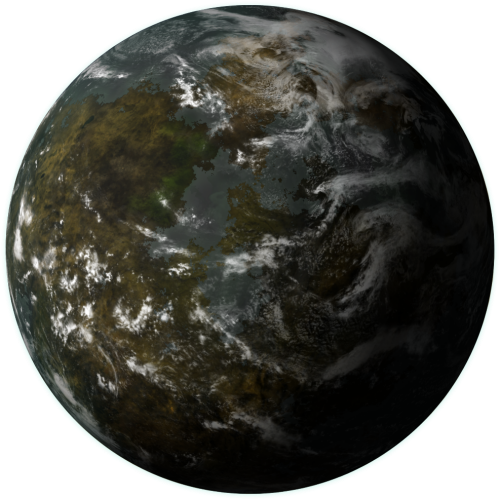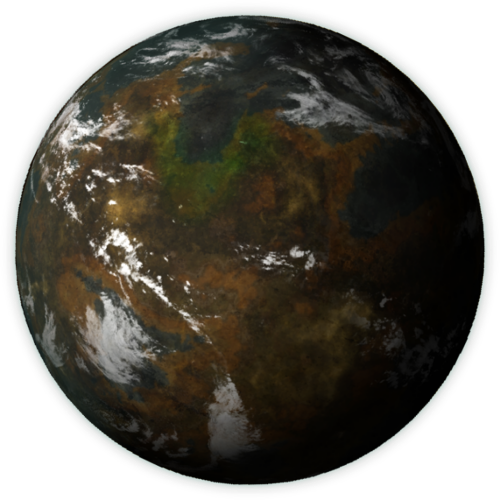Once the core of a Class F: Geometallic planet sufficiently cools,
volcanic activity lessens and worldwide temperatures continue to
fall. The planet eventually transitions into a Class G:
Geocrystalline world. Oxygen and nitrogen are present in some
abundance in these "Cambrian" worlds, giving rise to increasingly
complex organisms, such as primitive vegetation similar to lichen
and algae, and animals akin to sponges and jellyfish. Over the
course of the coming eons, these primitive life forms will eventually
flood the atmosphere with enough oxygen to support highly
complex flora and fauna, and potentially sentient life.
Meanwhile, the planet itself begins to inch ever closer to its final
stage of evolution during the geocrystalline phase. Class G planets
closer to their parent star might become arid wastelands; those
further away could transition into snowbound lands; yet others
could blossom into a tropical paradise. In fact, there are any
number of potential evolutions for a Class G planet, including Class
H: Desert, Class K: Adaptable, Class L: Marginal, Class M:
Terrestrial, Class O: Pelagic, or Class P: Glaciated.
volcanic activity lessens and worldwide temperatures continue to
fall. The planet eventually transitions into a Class G:
Geocrystalline world. Oxygen and nitrogen are present in some
abundance in these "Cambrian" worlds, giving rise to increasingly
complex organisms, such as primitive vegetation similar to lichen
and algae, and animals akin to sponges and jellyfish. Over the
course of the coming eons, these primitive life forms will eventually
flood the atmosphere with enough oxygen to support highly
complex flora and fauna, and potentially sentient life.
Meanwhile, the planet itself begins to inch ever closer to its final
stage of evolution during the geocrystalline phase. Class G planets
closer to their parent star might become arid wastelands; those
further away could transition into snowbound lands; yet others
could blossom into a tropical paradise. In fact, there are any
number of potential evolutions for a Class G planet, including Class
H: Desert, Class K: Adaptable, Class L: Marginal, Class M:
Terrestrial, Class O: Pelagic, or Class P: Glaciated.




